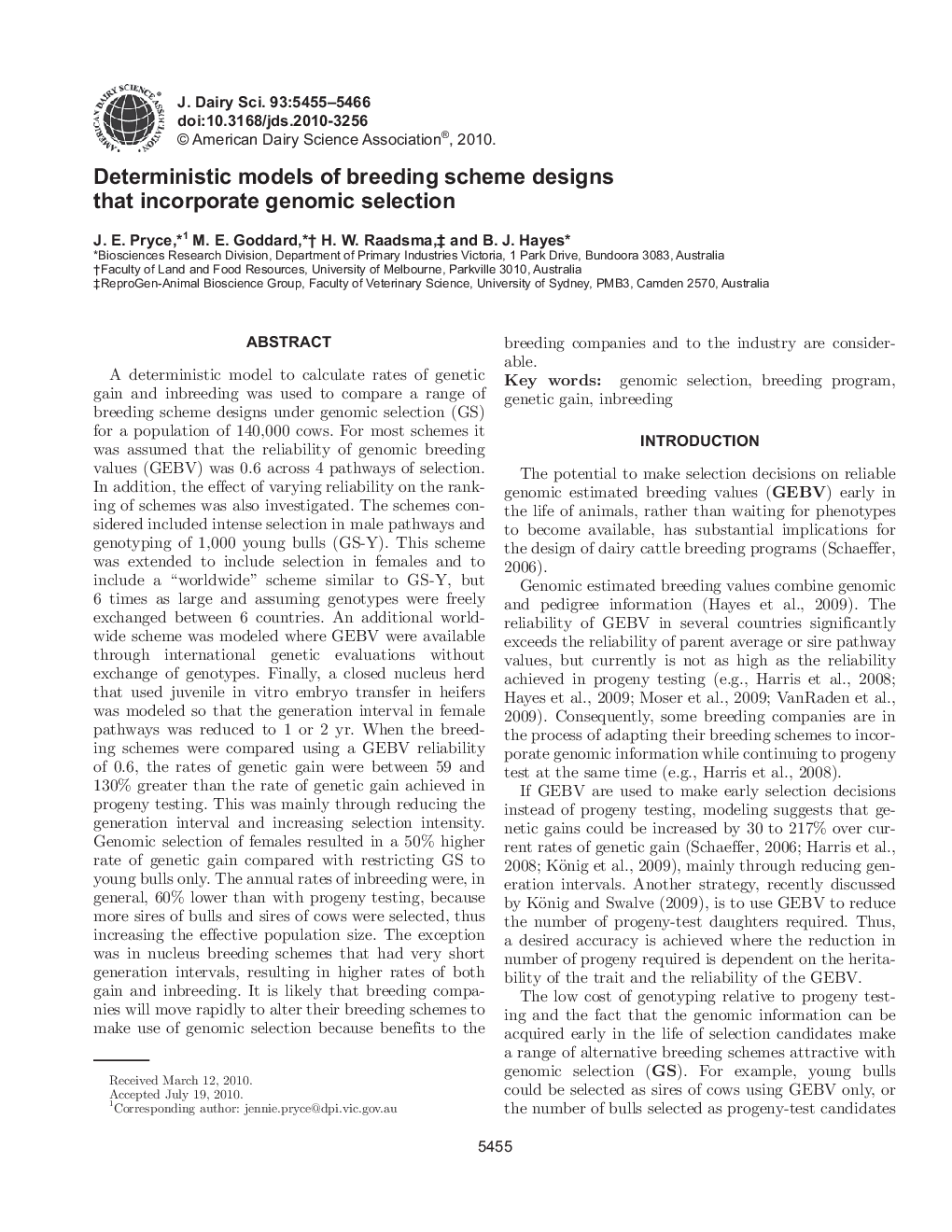| کد مقاله | کد نشریه | سال انتشار | مقاله انگلیسی | نسخه تمام متن |
|---|---|---|---|---|
| 2439025 | 1108085 | 2010 | 12 صفحه PDF | دانلود رایگان |
عنوان انگلیسی مقاله ISI
Deterministic models of breeding scheme designs that incorporate genomic selection
دانلود مقاله + سفارش ترجمه
دانلود مقاله ISI انگلیسی
رایگان برای ایرانیان
کلمات کلیدی
موضوعات مرتبط
علوم زیستی و بیوفناوری
علوم کشاورزی و بیولوژیک
علوم دامی و جانورشناسی
پیش نمایش صفحه اول مقاله

چکیده انگلیسی
A deterministic model to calculate rates of genetic gain and inbreeding was used to compare a range of breeding scheme designs under genomic selection (GS) for a population of 140,000 cows. For most schemes it was assumed that the reliability of genomic breeding values (GEBV) was 0.6 across 4 pathways of selection. In addition, the effect of varying reliability on the ranking of schemes was also investigated. The schemes considered included intense selection in male pathways and genotyping of 1,000 young bulls (GS-Y). This scheme was extended to include selection in females and to include a “worldwide” scheme similar to GS-Y, but 6 times as large and assuming genotypes were freely exchanged between 6 countries. An additional worldwide scheme was modeled where GEBV were available through international genetic evaluations without exchange of genotypes. Finally, a closed nucleus herd that used juvenile in vitro embryo transfer in heifers was modeled so that the generation interval in female pathways was reduced to 1 or 2 yr. When the breeding schemes were compared using a GEBV reliability of 0.6, the rates of genetic gain were between 59 and 130% greater than the rate of genetic gain achieved in progeny testing. This was mainly through reducing the generation interval and increasing selection intensity. Genomic selection of females resulted in a 50% higher rate of genetic gain compared with restricting GS to young bulls only. The annual rates of inbreeding were, in general, 60% lower than with progeny testing, because more sires of bulls and sires of cows were selected, thus increasing the effective population size. The exception was in nucleus breeding schemes that had very short generation intervals, resulting in higher rates of both gain and inbreeding. It is likely that breeding companies will move rapidly to alter their breeding schemes to make use of genomic selection because benefits to the breeding companies and to the industry are considerable.
ناشر
Database: Elsevier - ScienceDirect (ساینس دایرکت)
Journal: Journal of Dairy Science - Volume 93, Issue 11, November 2010, Pages 5455-5466
Journal: Journal of Dairy Science - Volume 93, Issue 11, November 2010, Pages 5455-5466
نویسندگان
J.E. Pryce, M.E. Goddard, H.W. Raadsma, B.J. Hayes,